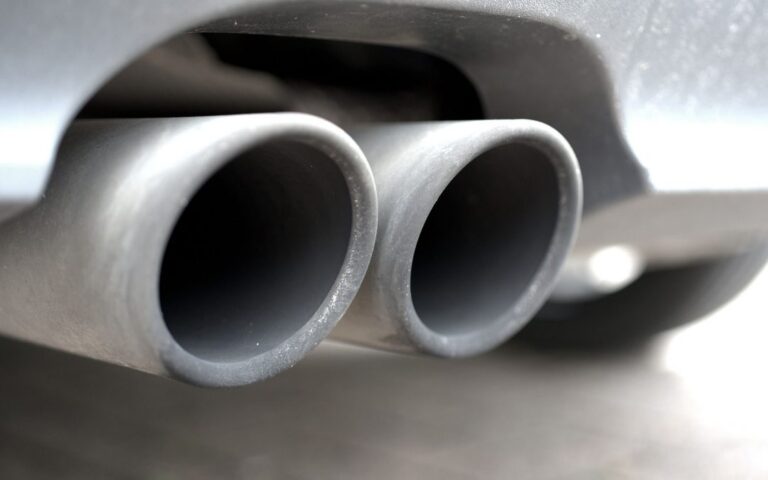can you reuse a head gasket
Introduction
A head gasket is a critical component of an engine, and it is important to ensure that it is in good condition. Reusing a head gasket can be a cost-effective solution, but it is important to understand the risks and benefits associated with this decision. This article will discuss the pros and cons of reusing a head gasket, as well as the steps you should take to ensure that it is safe to do so.
What Causes a Head Gasket to Need Replacement?
A head gasket is a critical component of an engine, as it seals the combustion chamber and prevents coolant and oil from mixing. When a head gasket fails, it can cause a variety of problems, including engine overheating, oil and coolant leaks, and decreased engine performance.
There are several common causes of head gasket failure. One of the most common is a cooling system malfunction, which can cause the engine to overheat. This can cause the head gasket to expand and eventually fail. Another common cause is a lack of lubrication, which can cause the gasket to dry out and crack.
In addition, head gaskets can fail due to age and wear. Over time, the gasket can become brittle and crack, leading to a leak. Finally, head gaskets can fail due to improper installation. If the gasket is not installed correctly, it can cause a leak or other problems.
In order to prevent head gasket failure, it is important to maintain the cooling system and ensure that the engine is properly lubricated. It is also important to replace the head gasket at regular intervals, as this will help to ensure that it is in good condition.
How to Diagnose a Blown Head Gasket
A blown head gasket is a serious issue that can cause major damage to an engine if not diagnosed and repaired quickly. Fortunately, there are several signs that can help you diagnose a blown head gasket.
The first sign of a blown head gasket is a visible leak of coolant from the engine. This is usually accompanied by a sweet smell of antifreeze in the engine compartment. If you notice either of these signs, it is important to check the coolant level in the radiator and the overflow tank. If the coolant level is low, it is likely that the head gasket has blown.
Another sign of a blown head gasket is white smoke coming from the exhaust pipe. This smoke is caused by the coolant leaking into the combustion chamber and burning off. If you notice white smoke coming from the exhaust pipe, it is important to check the oil dipstick. If the oil appears to be milky or frothy, it is likely that the head gasket has blown.
Finally, a blown head gasket can cause the engine to overheat. If the engine temperature rises quickly and stays high, it is likely that the head gasket has blown.
If you notice any of these signs, it is important to have the vehicle inspected by a qualified mechanic as soon as possible. A blown head gasket can cause major damage to an engine if not repaired quickly.
What Are the Benefits of Reusing a Head Gasket?
Reusing a head gasket has several benefits. First, it is a cost-effective solution. Replacing a head gasket can be expensive, and reusing the existing one can save money. Second, it is a time-saving solution. Replacing a head gasket can be a lengthy process, and reusing the existing one can save time. Third, it is an environmentally friendly solution. Reusing a head gasket reduces the amount of waste that would otherwise be generated by replacing it. Finally, it is a reliable solution. Reusing a head gasket can be a safe and reliable option if it is in good condition and properly installed.
In conclusion, reusing a head gasket can be a cost-effective, time-saving, environmentally friendly, and reliable solution. It is important to ensure that the head gasket is in good condition and properly installed before reusing it.
How to Properly Reuse a Head Gasket
Head gaskets are an essential component of any engine, as they provide a seal between the engine block and cylinder head. When a head gasket fails, it can cause a variety of problems, including oil and coolant leaks, engine misfires, and even engine failure. In some cases, it may be possible to reuse a head gasket if it is in good condition. However, it is important to take the proper steps to ensure that the gasket is properly reused.
The first step in reusing a head gasket is to inspect it for any signs of damage. Look for any cracks, tears, or other signs of wear and tear. If any damage is found, the gasket should be replaced rather than reused.
Once the gasket has been inspected and deemed to be in good condition, it should be thoroughly cleaned. This can be done using a soft brush and a mild detergent. Be sure to rinse the gasket thoroughly and allow it to dry completely before attempting to reuse it.
Next, the gasket should be lubricated with a thin layer of engine oil. This will help to ensure that the gasket seals properly and prevents any leaks.
Finally, the gasket should be installed correctly. Be sure to follow the manufacturer’s instructions for proper installation. If the gasket is not installed correctly, it may not seal properly and could cause further damage to the engine.
By following these steps, it is possible to properly reuse a head gasket. However, it is important to remember that reusing a gasket is not always the best option. If the gasket is damaged or worn, it should be replaced rather than reused.
What Are the Risks of Reusing a Head Gasket?
Reusing a head gasket can be a risky endeavor. Head gaskets are designed to be used once and then replaced. Reusing a head gasket can lead to a number of problems, including:
1. Leaks: Reusing a head gasket can cause it to become brittle and crack, leading to leaks in the engine. This can cause a decrease in engine performance and can even lead to engine failure.
2. Warping: Reusing a head gasket can cause it to warp, leading to a decrease in compression and a decrease in engine performance.
3. Overheating: Reusing a head gasket can cause it to become brittle and crack, leading to coolant leaks. This can cause the engine to overheat, leading to further damage.
4. Contamination: Reusing a head gasket can cause it to become contaminated with oil, coolant, and other debris, leading to further damage to the engine.
For these reasons, it is best to replace a head gasket after each use. Doing so will ensure that the engine is running at its best and will help to prevent costly repairs in the future.
What Are the Signs of a Leaking Head Gasket?
A leaking head gasket is a serious issue that can cause major damage to an engine if not addressed promptly. It is important to be aware of the signs of a leaking head gasket so that you can take action to prevent further damage.
The most common signs of a leaking head gasket include:
1. White smoke coming from the exhaust: White smoke is a sign that coolant is leaking into the combustion chamber and being burned off.
2. Overheating engine: If the head gasket is leaking, coolant can escape from the system, leading to an overheating engine.
3. Low coolant levels: If the head gasket is leaking, coolant will be lost from the system, leading to a decrease in coolant levels.
4. Oil contamination: If the head gasket is leaking, coolant can enter the oil system, leading to a milky or creamy substance in the oil.
5. Poor engine performance: If the head gasket is leaking, it can lead to a decrease in engine performance due to a decrease in compression.
If you notice any of these signs, it is important to have your vehicle inspected by a qualified mechanic as soon as possible. A leaking head gasket can cause major damage to an engine if not addressed promptly.
How to Choose the Right Head Gasket for Your Vehicle
When it comes to maintaining your vehicle, one of the most important components is the head gasket. The head gasket is a critical seal between the engine block and the cylinder head, and it is responsible for maintaining the pressure and temperature of the engine. Choosing the right head gasket for your vehicle is essential for ensuring that your engine runs smoothly and efficiently.
The first step in choosing the right head gasket is to determine the make, model, and year of your vehicle. This information will help you identify the correct head gasket for your vehicle. You should also check the engine size and type, as this will help you determine the size and shape of the head gasket you need.
Once you have identified the correct head gasket for your vehicle, you should consider the material it is made from. Head gaskets are typically made from either metal or composite materials. Metal head gaskets are more durable and can withstand higher temperatures, while composite head gaskets are more flexible and can provide better sealing.
You should also consider the thickness of the head gasket. Thicker head gaskets are more durable and can provide better sealing, but they can also be more expensive. Thinner head gaskets are less expensive, but they may not provide as good of a seal.
Finally, you should consider the type of head gasket you need. There are two main types of head gaskets: multi-layer steel (MLS) and composite. MLS head gaskets are more durable and provide better sealing, while composite head gaskets are more flexible and can provide better sealing in certain applications.
Choosing the right head gasket for your vehicle is essential for ensuring that your engine runs smoothly and efficiently. By taking the time to identify the correct head gasket for your vehicle, you can ensure that your engine is properly sealed and protected.
What Are the Different Types of Head Gaskets and Their Uses?
Head gaskets are an essential component of any engine, as they provide a seal between the cylinder head and the engine block. Without a head gasket, the engine would not be able to function properly. There are several different types of head gaskets available, each with its own unique purpose and application.
The most common type of head gasket is the multi-layer steel (MLS) gasket. This type of gasket is designed to provide a strong seal between the cylinder head and the engine block, while also providing a layer of insulation to reduce heat transfer. MLS gaskets are typically used in high-performance engines, as they are able to withstand higher temperatures and pressures.
Another type of head gasket is the composite gasket. This type of gasket is made from a combination of materials, such as rubber, metal, and plastic. Composite gaskets are designed to provide a strong seal while also being able to withstand higher temperatures and pressures. They are often used in engines that require a higher level of performance.
The third type of head gasket is the elastomeric gasket. This type of gasket is made from a combination of rubber and metal, and is designed to provide a strong seal while also being able to withstand higher temperatures and pressures. Elastomeric gaskets are often used in engines that require a higher level of performance.
Finally, there is the solid copper gasket. This type of gasket is made from a single piece of copper, and is designed to provide a strong seal while also being able to withstand higher temperatures and pressures. Solid copper gaskets are often used in engines that require a higher level of performance.
No matter which type of head gasket you choose, it is important to ensure that it is properly installed and maintained. This will help to ensure that your engine runs smoothly and efficiently.
Q&A
1. Can you reuse a head gasket?
No, it is not recommended to reuse a head gasket. Head gaskets are designed to be used once and should be replaced when the head is removed.
Conclusion
In conclusion, it is possible to reuse a head gasket, but it is not recommended. Reusing a head gasket can lead to a number of problems, such as leaks, poor sealing, and engine damage. It is best to replace the head gasket with a new one to ensure the best performance and reliability of your engine.




